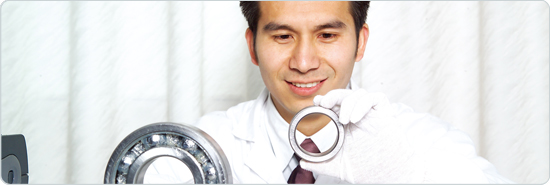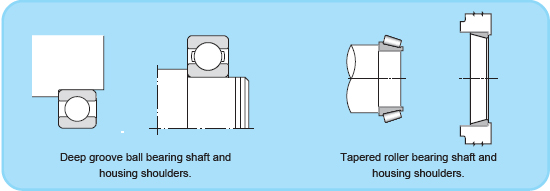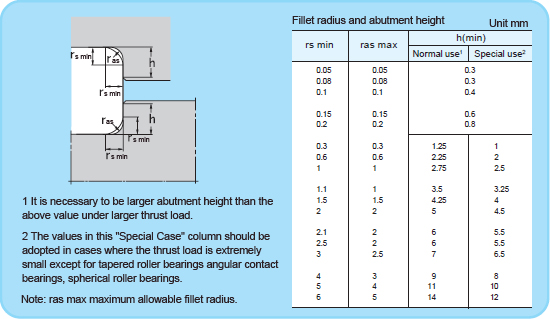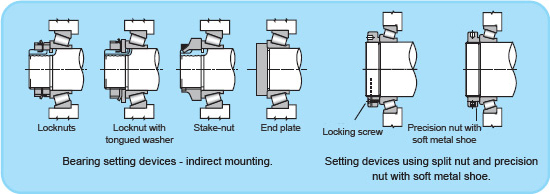- Main Clients and markets
- Customer Service
- Bearing Selection services
- Bearing Handling Service
- Bearing Fitting Service
- Lubrication Service
- Preload
-
Bearing cleanliness

When fixing a bearing in position on a shaft or housing, there are many instances where the interference fit alone is not enough to hold the bearing in place. Bearings must be fixed in place by various methods so that they do not move axially when placed under load.
● Backing shoulder design
The primary function of either the inner ring or outer ring backing shoulders is to positively establish the axial location and alignment of the bearing and its adjacent parts under all loading and operating conditions. The conventional and most widely accepted method used to provide bearing backing is to machine a shoulder on a shaft or in the housing.

Since shaft shoulder height and the outer diameters of spacers or the housing shoulder height are closely related to the dismounting of bearings, their standard dimensions are described in our catalogues for reference purposes. Along with these shoulder heights, the fillet radius in the corners of shafts and housings is also important. The shaft and housing abutment height (h) should be larger than the bearings' maximum allowable chamfer dimensions (rs max), and the abutment should be designed so that it directly contacts the flat part of the bearing end face. The fillet radius must be smaller than the bearing's minimum allowable chamfer dimension (rs min) so that it does not interfere with bearing seating. Following talbe lists abutment height (h) and fillet radius (ras).

● Spacer & snap ring design for bearing inner ring
For a bearing to operate for maximum service, it must be of sufficient section and design to resist axial movement due to loading or distortion and must be wear-resistant at the interface with the bearing. In some applications a spacer is used between a cone and shaft shoulder or a snap ring. As a further alternative, a split spacer can be used.

● Spacer & snap ring design for beairng outer ring
A spacer or snap ring can also be used for outer ring backing. If a snap ring is used for bearing backing, it is suggested that an interference cup fit be used. For a tapered roller bearing, the cup used for bearing setting in a direct mounting (roller small ends pointing outwards) is usually set in position by a cup follower or by mounting in a carrier.

● Indirect mounting design for tapered roller bearings
With an indirect mounting (roller small ends pointing inwards), bearing setting can be achieved by a wide variety of devices. In applications requiring precision class bearings, a special precision nut can be used. This has a soft metal shoe that is clamped against the threads with a locking screw. Other solutions can use split nut and/or ground spacers where setting cannot be altered





